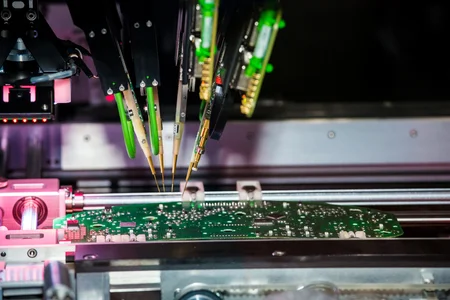Flexible printed circuit boards (PCBs) have been around for several decades, but their importance in the electronics industry has grown exponentially in recent years. A flexible PCB, also known as a flex circuit or flex board, is a thin and flexible electronic circuit made of multiple layers of flexible plastic substrates, conductive traces, and insulating layers. The primary advantage of flexible PCBs is that they can be bent, twisted, and folded to fit into tight spaces and complex shapes, which makes them ideal for use in various industries such as aerospace, medical, automotive and consumer electronics.
In this article, we will explore the role of flexible PCBs in the electronic industry and discuss their advantages, applications, and future prospects.

Flexible PCBs offer several advantages over traditional rigid FR4 PCBs, including:
- Size and Weight Reduction
Flexible PCBs enable the development of ultra-thin and lightweight electronic devices by replacing the traditional rigid PCBs. Flexible PCBs can bend and conform to the shape of the device, thus reducing the space required for the circuitry and making the device much lighter.
- Increased Reliability
Flexible PCBs offer higher reliability compared to rigid PCBs since they have fewer interconnects, which reduces the risk of failure due to solder fatigue or vibration. Flexible PCBs also offer better resistance to shock and vibration, making them ideal for use in rugged environments.
- Improved Electrical Performance
Flexible PCBs have better electrical performance compared to normal FR4 PCBs since they can be designed with shorter signal paths, which reduces signal loss and interference. Additionally, the flexible substrates of the flexible PCBs allow for better impedance control and lower crosstalk, resulting in higher signal integrity and reduced electromagnetic interference.
- Ease of Assembly
Flexible PCBs are easier and quicker to assemble than traditional rigid PCBs, as they can be bent and folded to fit into tight spaces. This reduces the time and cost required for assembly and testing.
- Design Flexibility
Flexible PCBs offer greater design flexibility, as they can be designed to fit into complex shapes and contours, which allows for more creative and innovative product designs.
Flexible PCBs have a wide range of applications in various industries, including:
- Aerospace and Defense
Flexible PCBs are used in aerospace and defense applications due to their ability to withstand extreme temperature and pressure conditions. They are used in aircraft and spacecraft for various applications such as flight control systems, communication systems, and radar systems.
- Medical
Flexible PCBs are used in medical devices such as pacemakers, defibrillators, and implantable devices due to their biocompatibility and ability to conform to the shape of the human body. They are also used in medical imaging equipment such as MRI machines and CT scanners.
- Automotive
Flexible PCBs are used in automotive applications such as electronic control units, sensors, and lighting systems. They offer high reliability and durability, making them ideal for use in harsh automotive environments.
- Consumer Electronics
Flexible PCBs are used in various consumer electronics such as our smartphones, tablets, and wearables. They enable the development of compact and lightweight electronic devices, making them ideal for use in portable electronic products.
Flexible PCBs are a vital component of modern electronics, enabling more advanced and efficient designs. They offer greater flexibility in terms of the size and shape of electronic devices, and their use can help to reduce manufacturing costs. Flexible PCBs have a wide range of applications, from consumer electronics to aerospace and medical devices. With the progress of science and the rapid development of electronic technology, the role of flexible PCBs in the electronic industry will only continue to grow as the demand for smaller and more complex electronic devices increases. As such, it is important for designers and manufacturers to understand the benefits and limitations of flexible PCBs in order to make informed decisions about their use in their designs.

In conclusion, flexible PCBs play a critical role in the electronic industry, providing a flexible and cost-effective solution for the design and production of electronic devices. By leveraging the benefits of flexible PCBs, designers and manufacturers can create smaller, lighter, and more complex electronic devices that meet the needs of today's consumers. As the electronic industry continues to evolve and grow, it is clear that flexible PCBs will play a vital role in shaping the future of electronics.










 2023-04-10
2023-04-10
 BEST
BEST

.png)
.png)
.png)
.png)

.png)

